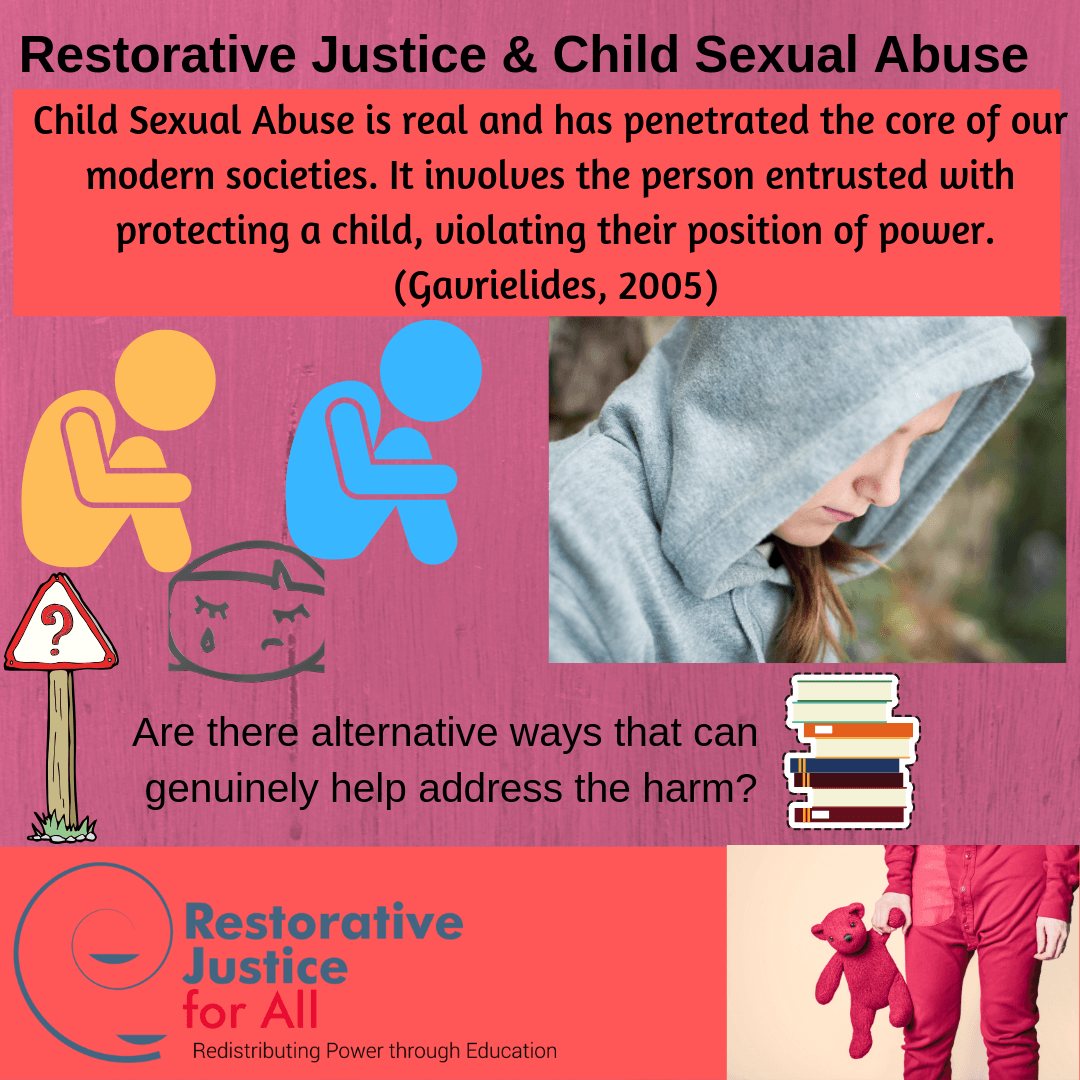Child Sexual Abuse & Restorative Justice
Restorative
Justice &
Child Sexual Abuse
Child Sexual Abuse ...
... is real
and has penetrated the core of our modern societies. It involves the person entrusted with protecting a child, violating their position of power.
School teachers, spiritual leaders, parents, family members, doctors, scout leaders and coaches have all been included in the list of perpetrators (Gavrielides, 2005).
Restorative Justice ...
... is an ethos
with practical goals, among which is to restore harm by including affected parties in a (direct or indirect) encounter and a process of understanding through voluntary and honest dialogue. Restorative justice adopts a fresh approach to conflicts and their control, retaining at the same time certain rehabilitative goals" (Gavrielides 2007: 139).
RJ4All ...
... has been involved in the investigation and researching of child abuse cases since 2004 with a particular interest in the healing of the abused. As part of this journey, Dr. Gavrielides
embarked on a multi-year, international, research and policy project looking at the potential of restorative justice with clergy child sexual abuse cases that occurred within the Catholic Church and other faith institutions.
Through qualitative research, policy development and campaigning, the project aims to explore alternative ways that can genuinely help address the harm that these cases have caused to the abused, communities and the involved faith institutions.
The project is unfunded and we are interested in hearing from potential partners, sponsors and donors.
Project Published Research & Background
In 2005, Gavrielides and Coker published " Restoring Faith: Resolving the Catholic Church's Sexual Scandals Through Restorative Justice", 8:4 Contemporary Justice Review. The paper reported on the main findings of the first stage of the RJ4All project. This centered on desk research that looked into existing and past international restorative practices with child sexual abuse. The paper also provided a critical overview of restorative practices and research projects that have been implemented with clergy sexual offending cases. The results of these programmes were contrasted with notorious clergy sexual abuse cases that had been processed through the traditional criminal justice system.
Subsequently, Gavrielides conducted primary qualitative research with survivors, practitioners and interested parties. The new publication Gavrielides, T. (2012) "Clergy Child Sexual Abuse & the Restorative Justice Dialogue", Journal of Church and State, argues the following: Firstly, these cases extend beyond the breach of state laws. They have multiple psychological and existential implications and constitute a violation of victims’ faith, identity and basic human right to dignity, as well as the sacramental culture of Catholicism. Secondly, due to this additional dimension, the impact of clergy child sexual abuse cases on all parties involved can best be mitigated through user-led reconciliation processes such as “dialogue”. Thirdly, one form of such a dialogue could be restorative justice. Its potential as an alternative model to traditional litigation and station action were examined. Critical analysis of the extant literature and a selection of case studies were attempted in an effort to identify next steps for researchers and policy makers in this grey area of practice.
Gavrielides is now in the process of writing his next monograph on power and restorative justice. Child sexual abuse features prominently and he is looking for case studies, evidence, testimonies and public views on the matter that will either be published as part of the book or inform my argument. As part of this project, he recently published a blog with reflections on his discussions with a paedophile. A chapter is also included in the International Handbook of Restorative Justice written by Professor Karen Terry and edited by Professor Theo Gavrielides. Other partners include: Restorative Justice International.
Publications include:
Gavrielides, T. (2012) "Clergy Child Sexual Abuse & the Restorative Justice Dialogue", Journal of Church and State, Volume 55, Issue 4, 1 December 2013, Pages 617–639, https://doi.org/10.1093/jcs/css041.
Gavrielides, T. (2012) "Clergy sexual abuse: the restorative justice option" in K.V Wormer & L. Walker Restorative Justice Today: Applications of Restorative Interventions, Sage: California;
Gavrielides T. and D. Coker (2005) “Restoring Faith: Resolving the Catholic Church’s Sexual Scandals through Restorative Justice”, 8:4 Contemporary Justice Review,
pp. 345-365. ISSN 1028–2580 (print) /ISSN 1477–2248.
THE PROJECT
The project is ongoing and we are far from reaching long term solutions to the problem.
Through evidence-based arguments, research and networking, the project aims to:
Increase public awareness of restorative justice
Encouraging a public debate about its potential for resolving sexual abuse cases such as those that occurred within the Catholic Church;
Influence national and international policy
International meetings include Gavrielides' participation in the international workshop "Sexual Abuse in the Church and other institutional settings"
organised by the International Institute for the Sociology of Law in Onati, Spain.
Publish its findings
Through peer review journals, academic books and articles so as to enrich an under-developed research area.
Inform and influence practices and encourage faith institutions
Such as the Catholic Church, to consider alternative options, such as restorative justice, in the long lasting resolution of the sexual scandals that occurred within their body.
Restorative Justice for All International Institute (RJ4All)
The RJ4All Rotherhithe Community Centre, 30 Plough Way London SE16 2LJ, UK
admin@rj4all.org | +44(0)7708758600 or 07795678904
Company CIC no : 08684719
| D-U-N-S: 219626583 | Ebay charity ID 125844 | CPD Membership no: 12186 | Paypal Giving Fund number: 1138175 | EC ID: E10008173 | EuropeAid ID: GB-2019-AKO-0605322022 |
European PIC:
941867673 | Ariba Commerce Cloud no: AN11181340179 | UKPRN: 10093192 | GLA Open Project System ID: 13678

